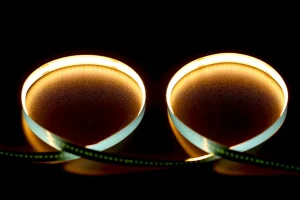For the best results, you should take care of the power, placement and secure the connection when installing an SMD LED strip. These high efficacy, long life strips are rated for up to 50,000 hours, so they offer a solution that lasts. First of all—correct voltage and power supply. 12V and 24V SMD LED strips can be found in the market, with the choice of 24V being best for longer installations as 24 voltage maintains uniform brightness performance over long lengths. The standard rule of thumb is 4.8W per meter for ambient lighting, and 14.4W per meter for task or accent lighting.
Surface preparation before installation is very important. A dusty, oily portion around the window sealing can reduce your strip adhesive strength resulting in stripping off of the strip after a period in use since we stick our NashCare strips. Isopropyl alcohol (IPA) — users often opt for this cleaning agent to achieve a practically clean surface on which to bond. Aluminum channels or heat sinks are typically used for larger or heat-sensitive installations, as these extrusions create enough of a heat-reducing surface to extend the life-span of an LED strip by up to 20%.
LEDs strips need to be measured and then cut down at the exact length required for a clean finish as they are usually sold in segments of 5 cm for the 12V and 10 cm bridges for the 24V. Cutting points appear on both strips at regular intervals which, when accurately followed using sharp scissors (or shears), emit very clean looking LEDs that do not harm any of the revealed inner circuits. For those who are new to the scene, using connectors will eliminate needing to do any soldering so it can be easier and less time consuming. For secure attachment without any technical skills, the availability of connectors that could keep the electrical integrity of the SMD LED strip was necessary.
SMD LED strips such as 5050 and 3528 come in different lumens, colors of light and even light temperatures so that you can better adapt them to each environment. The 5050 SMD LED is a common choice for accent lighting in kitchens and workspaces as it offers high brightness, whereas the 3528 model provides a more mellow light output best suited to ambient lighting. Commonly, professional lighting designers suggest warm white (2700-3000K) for hospitality and allow white (5000-6000K) for industrial applications

Dimming: It is crucial to a proper power distribution … from start to finish, or voltage will drop at the end of long strips. To maintain uniform brightness and extend LED life, experts suggest using one power supply for each 5 meters of the LED strip. Parallel Connection ensures the same intensity power, in a parallel connection where the total length of installation exceeds 10 meters.
Its for those who are wondering, "how can I get the best results out of a SMD LED strip?" One of the benefits to following these guidelines is that your lighting will be both bright, last many hours, and not fade with use. If taken care of and somewhat installed properly these LED strips will be providing substantial light output for quite some time.